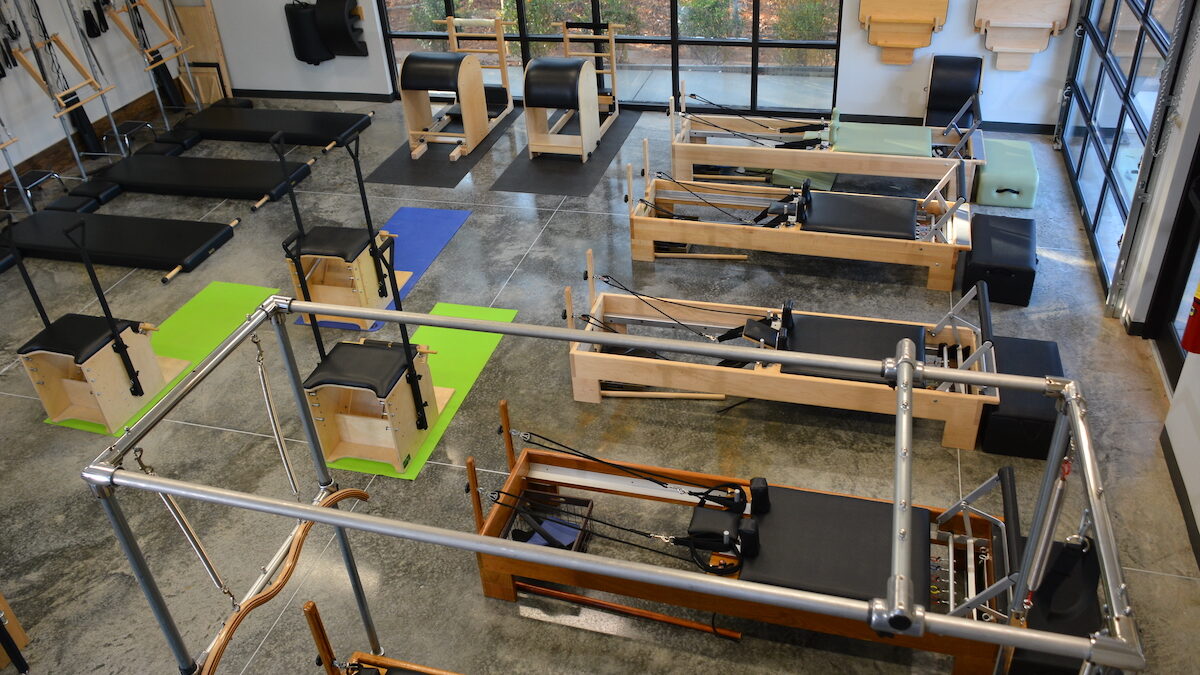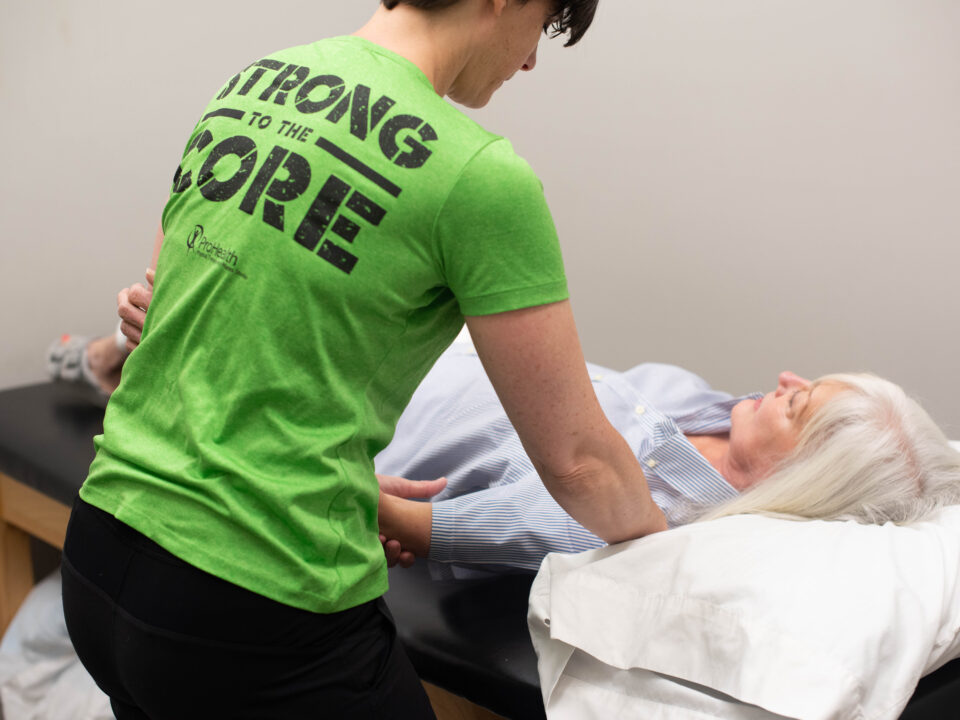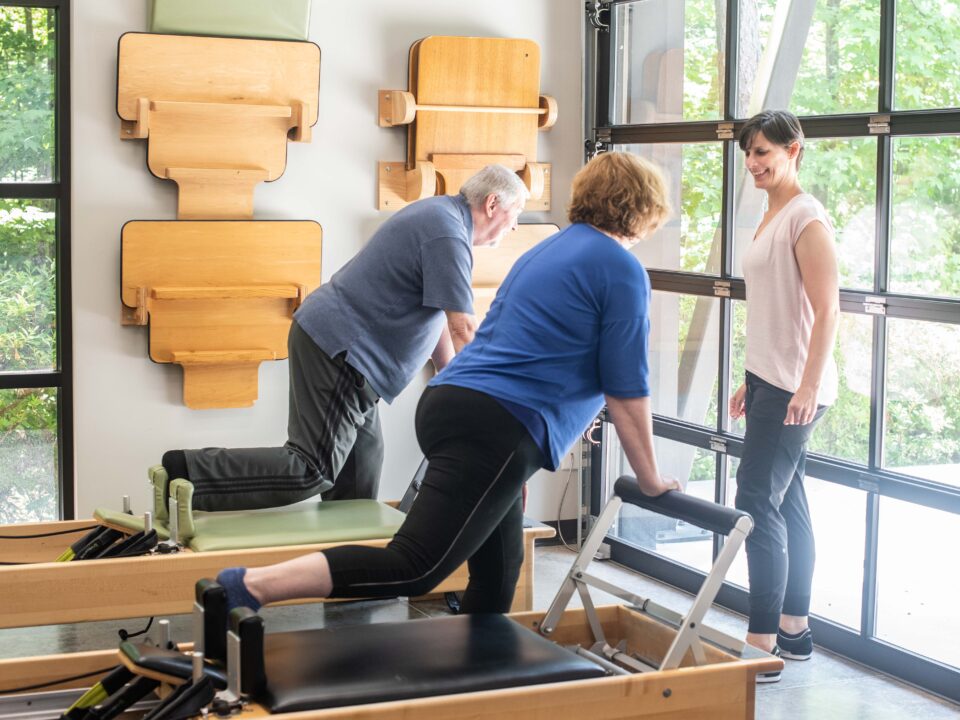- Mon - Fri
7.30 AM – 5.30 PM
Other hours upon request - 770-487-1931
The Essential Guide to Pilates Equipment

Did you know that there’s more to Pilates than just a mat? In fact, there are a variety of different pieces of equipment for Pilates classes. Whether a beginner or a seasoned pro, this guide will give you all the information you need on the different types of Pilates equipment available.
Types of Pilates Equipment
Joseph Pilates, the founder of the method, was exceptionally innovative and created numerous types of apparatus. This article will cover the most commonly used Pilates equipment in the studio and at home.
Reformer
The reformer is a well-known piece of equipment for Pilates in the studio and at home. Exercises are done laying down, seated, kneeling, or standing on the carriage. The carriage moves forward and back with a set of pulley straps that attach to the feet or hands. Tension springs add resistance while moving through the workout. The reformer props like the box, jump board, and Konnector add variety and challenge.
Cadillac
The Cadillac is the largest piece of Pilates equipment in the studio. Often used in private sessions, it can also be worked into group tower classes as well. The Cadillac is raised higher off the ground than traditional reformers. This makes it very accessible to individuals who struggle to get up and down from the ground. The Cadillac is very versatile with several attachments including arm springs, leg springs, push-through bar, ankle straps, trapeze, and roll-down bar. The Cadillac is excellent for those transitioning from physical therapy to the most advanced student.
Tower
Simply put, the tower is half of the Cadillac. You can do almost everything on the tower that you do on the Cadillac. While the platform on the Cadillac is raised, the tower platform is directly on the ground. Towers are mostly found in the studio. Some studios may also have a reformer/ tower combo. The back of the reformer has the tower attached and the moving carriage of the reformer converts into the flat platform.
Chair
Pilates chair is used in private Pilates sessions and group Pilates circuit classes. The original design by Joseph Pilates allowed the equipment to convert into a home chair used for furniture. Today, it’s typically just for Pilates studio use. While using the chair, you can sit, stand or kneel on the smaller platform. Under the platform are two springs that attach to a foot pedal. Traditionally, the chair has one long pedal. Some designs today have two shorter ones, adding additional variety in movements. Handles on the side can be added or removed for support or challenge.
Ladder Barrel
Often found in the Pilates studio, this piece of equipment is used less often than the three above. The rounded barrel is about waist height, attaching to a ladder of the same height. This is excellent for stretching and core work. The rounded barrel gives an additional challenge to core stability when used for abdominal work.
Mat
Simple, portable, and the most commonly used Pilates equipment at home. The Pilates mat is affordable and accessible to everyone. Pilates mat classes are popular in the studio, online, and at home. From the beginner to the advanced student, Pilates mat gives a well-rounded workout.
Magic Circle
The Magic Circle is a popular, Pilates equipment prop. About 1 foot in diameter, it’s simply a circle that’s firm, yet movable. Working with the magic circle applies tension without weights. It can be used alone or with any of the above Pilates equipment. The magic circle can be used from the upper body to the lower body and everything in between.
What equipment do I need for Pilates at home?
With all these amazing choices of Pilates equipment, what equipment do I need for Pilates at home? Most simply, a good Pilates mat is all you need to get started. As you grow in your practice, adding the magic circle, light hand weights, and a foam roller can add variety and an additional challenge.
Purchasing the reformer, Cadillac, tower, chair, or ladder barrel is both expensive and takes up a lot of space. Before making one of these larger purchases, sign up for Pilates studio equipment classes. First, it’s important to learn the correct form to avoid injury and get the most out of your Pilates practice. Second, you may find you enjoy the community atmosphere of a studio. If you do decide to purchase a larger piece of Pilates equipment for your home, ProHealth Pilates Studio offers online access to reformer classes. You’ll enjoy the benefit of professional Pilates coaching while working out from home.
Pilates equipment can be expensive. If you don’t want to spend a lot of money on equipment, give it a try before you buy. That way, you’ll know exactly what type of equipment works best for your needs and preferences. Ready to invest in some quality Pilates gear? Check out our classes at ProHealth Pilates in Peachtree City, GA today!




